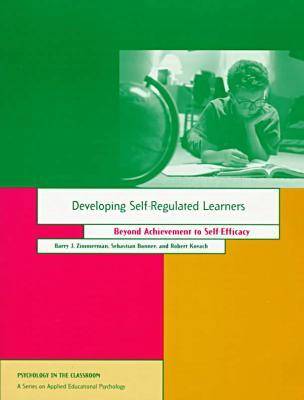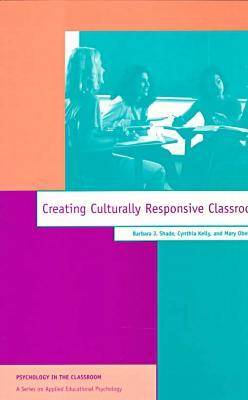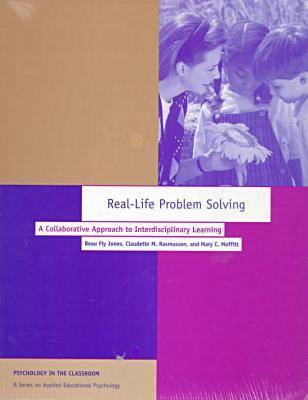Psychology in the Classroom S.
3 total works
Developing Self-regulated Learners
by Barry J Zimmerman, etc., Sebastian Bonner, and Robert Kovach
Published 1 January 1996
Every teacher would like to have a classroom full of "smart learners". This accessible guide for middle school and high school teachers will show the reader how, through self-regulatory training and development, the classroom can be converted into a learning academy full of motivated, empowered students. Teachers will learn to help students develop five essential study skills as part of their regular classroom assignments: time planning and management, text comprehension and summarisation, classroom note-taking, test anticipation and preparation, and writing. Five-week curricula models are presented for each skill area. Through this process, students assume a greater role in their own learning, as they systematically monitor their own work habits and study skills and predict their own level of performance. Two student case examples presented early on are followed throughout the book as the students improve their performance and gain self-esteem. The newfound confidence that results from self-regulatory learning can not only improve students' scholastic efforts, but also can transform their academic identities.
This book is part of the Division 15 series, "Psychology in the Classroom", which is geared toward elementary, middle, and high school teachers. The goal of this series is to encourage teachers to base their daily classroom practice on sound principles derived from the latest educational psychology research. The series thus attempts to bridge the gap between theory and practice. Each book is written in an accessible, straightforward style and contains a wide range of user-friendly features, such as real-life case illustrations, sample classroom activities, self-study questions and suggested readings.
This book is part of the Division 15 series, "Psychology in the Classroom", which is geared toward elementary, middle, and high school teachers. The goal of this series is to encourage teachers to base their daily classroom practice on sound principles derived from the latest educational psychology research. The series thus attempts to bridge the gap between theory and practice. Each book is written in an accessible, straightforward style and contains a wide range of user-friendly features, such as real-life case illustrations, sample classroom activities, self-study questions and suggested readings.
No 10
Creating Culturally Responsive Classrooms
by Barbara J. Shade, etc., Cynthia Kelly, and Mary Oberg
Published 1 January 1997
Today's teachers have heard the buzz about multicultural instruction but still have practical questions about how to implement it in their increasingly diverse classrooms. This text provides ""how-to"" answers to these questions and presents important and relevant theoretical research explaining the ""why"" behind this educational reform movement. Containing concrete examples and detailed scenarios, this book encourages teachers to build bridges between the school culture and students' community culture, and to reflect on their own teaching techniques. This text is part of the ""Psychology in the Classroom"" series which seeks to encourage teachers to base their daily classroom practices on sound principles derived from the latest educational psychology research. Each text in the series contains a wide range of user-friendly features, such as real-life case illustrations, sample classroom activities, self-study questions and suggested readings.
Real-life Problem Solving
by Beau Fly Jones, etc., Claudette M. Rasmussen, and Mary Moffitt
Published 1 January 1997
Teachers today are faced not only with increasing challenges in the classroom but also with mounting pressures to be more creative in their use of preparation time. With this in mind, the creators of the "Psychology in the Classroom" series have designed these books to be both inspiring and practical. Teachers will find that a number of user-friendly features make the educational principles discussed in these books easy to adapt for classroom use. The books contain many of the following practical study aids: motivational introductions of the topic through case histories and examples that are meaningful to you as a teacher; statements of rationale and goals indicating why it is important to you as a teacher to learn about the topic in the book and what you can hope to accomplish for your learning efforts; summary of research and theory base that provides brief synopses of literature pertinent to the topic; classroom strategies that include basic principles, guidelines, "how-tos, " strategies, and skills for putting the research-based principles into action in your classroom; content summaries and self-directed questions that give you an opportunity to integrate what you have learned and to monitor your progress; answers to self-directed questions in cases where answers are not uniquely self-generated; final review; glossary; and suggested readings.


